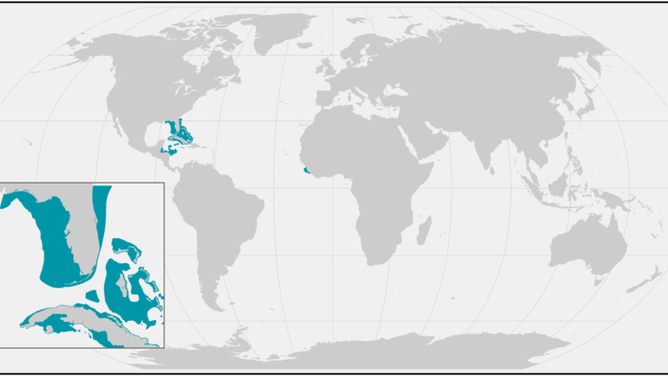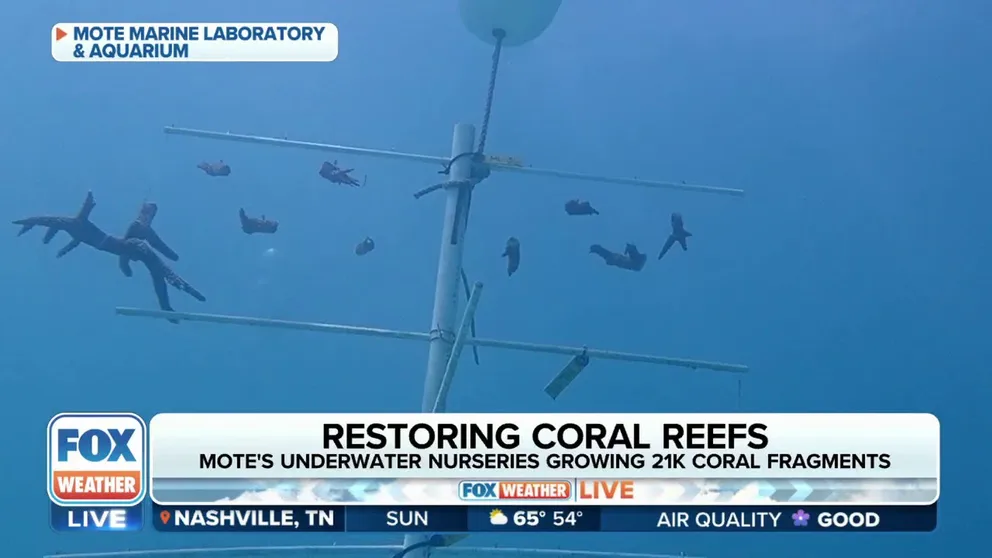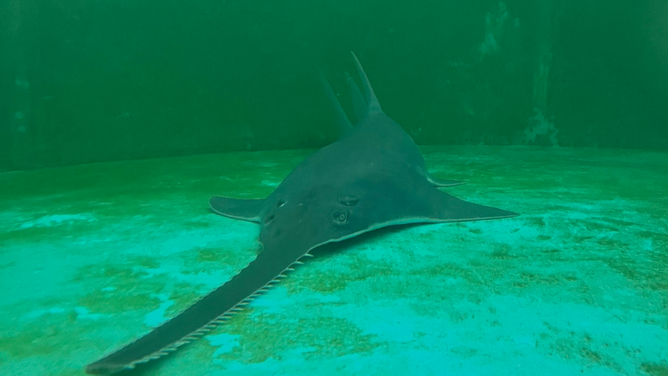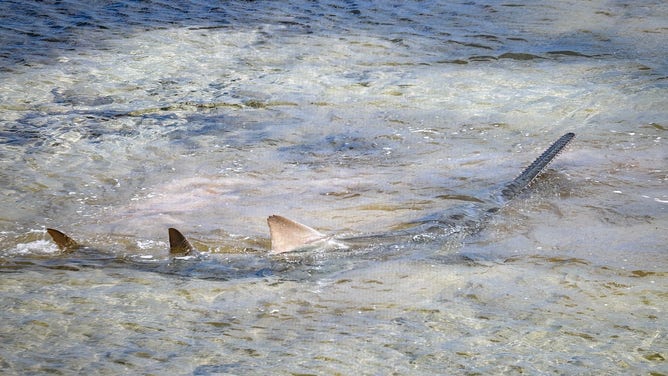Biologists rescue endangered sawfish in Florida Keys as race to save species underway
The smalltooth sawfish is related to rays, skates and sharks and is one of five species of sawfish. NOAA Fisheries reports sawfish once lived along the Gulf of Mexico and the East Coast but today are only found around South Florida.
How researchers work to restore declining coral reefs as oceans warm
Dr. Jason Spadaro, Program Manager of Mote Coral Reef Restoration and Research Program, joined FOX Weather on Sunday and explained how researchers are not only trying to preserve what’s left of our coral reefs, they’re trying to restore function to those critical ecosystems that support marine life.
CUDJOE KEY, Fla. – A smalltooth sawfish that was reported to be in distress off the Florida Keys is recovering at the Mote Marine Laboratory in Sarasota as biologists work to figure out what’s behind a sudden spike in deaths of the endangered species.
The Florida Fish and Wildlife Conservation Commission reports the over 11-foot sawfish was swimming in circles in Cudjoe Bay when a witness reported the case to the agency.
Due to an emergency response that NOAA Fisheries instituted in recent weeks after dozens of sawfish were discovered dead, numerous agencies participated in the rescue and transported it to a rehabilitation center.
"Led by NOAA, our biologists and partners have taken an unprecedented step to rescue an adult smalltooth sawfish in the Keys. This has not been attempted before, but this unusual mortality event made this necessary," Gil McRae, director of FWC’s Fish and Wildlife Research Institute, said in a statement. "We are hopeful this rescue and rehabilitation of an adult smalltooth sawfish will bring us one step closer to understanding the cause of this event.
SEE THE MASSIVE ALLIGATOR FOUND LURKING IN A SOUTH FLORIDA SWAMP
At least 38 sawfish have been found dead in recent months, with biologists still actively trying to determine the cause behind the sudden spike in mortality.
Dozens of necropsies have not yielded any clues to a potential source of the illnesses.
"There are no signs of a communicable pathogen and specimens were negative for bacterial infection. Dissolved oxygen, salinity, pH and temperature are not suspected to be the cause of the fish behavior or kills. Testing of water and fish tissue did not indicate that red tide was the cause," the agency stated.
Recent unusual mortality events in the Sunshine State involving dolphins and manatees have been tied to ecological factors such as a drop in forage and low salinity levels.
Neither NOAA nor the FWC alluded to whether extreme water temperatures that have led to significant bleaching of corals in the region could be to blame.
In surveyed areas, NOAA reported less than 22% of staghorn coral survived through a significant heat wave in 2023.

Map of the range of the smalltooth sawfish
(NOAA)
NOAA first listed the U.S. population as endangered in 2003, after the species’ disappearance from the western Gulf of Mexico and Southeast Coast.
Biologists at the Mote Marine Laboratory say they’ll continue to provide round-the-clock care to the sawfish with the hopes of releasing it back into the wild when it reaches full health.
The FWC has set up a hotline at (844) 4-SAWFISH (844-472-9347) for anyone who witnesses a sawfish to report the encounter.



